 Evolution
Evolution
 Intelligent Design
Intelligent Design
The Best and Worst Heuristics for Biological Discovery

The bad news first. What’s the worst possible heuristic for making biological discoveries?
We don’t know what this structure does, so it probably does nothing. Remember, evolution produces a lot of non-functional debris.
What’s the best heuristic?
We don’t know what this does. Let’s find out.
Here’s a case in point at Cell. It’s open access and incredibly cool and interesting:
According to the Summary section:
Mammalian oocytes are filled with poorly understood structures called cytoplasmic lattices. First discovered in the 1960s and speculated to correspond to mammalian yolk, ribosomal arrays, or intermediate filaments, their function has remained enigmatic to date. Here, we show that cytoplasmic lattices are sites where oocytes store essential proteins for early embryonic development. Using super-resolution light microscopy and cryoelectron tomography, we show that cytoplasmic lattices are composed of filaments with a high surface area, which contain PADI6 and subcortical maternal complex proteins. The lattices associate with many proteins critical for embryonic development, including proteins that control epigenetic reprogramming of the preimplantation embryo. Loss of cytoplasmic lattices by knocking out PADI6 or the subcortical maternal complex prevents the accumulation of these proteins and results in early embryonic arrest. Our work suggests that cytoplasmic lattices enrich maternally provided proteins to prevent their premature degradation and cellular activity, thereby enabling early mammalian development.
